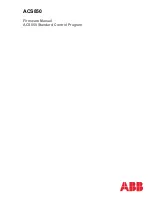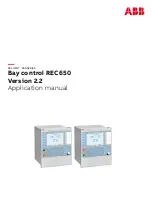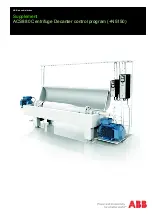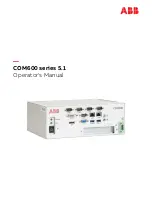
125
dividual fl ight phases is determined primarily by the
Offset value entered in the »
Control adjust
« menu;
see page 58. However, if you wish to be able to vary
the fl ap settings in fl ight, or generally prefer manu-
al fl ap control, any transmitter control assigned to “in-
put 6” can be used; see »
Control adjust
«, page 58;
e.g. one of the two sliders fi tted as standard. This con-
trol operates the two fl ap servos connected to recei-
ver output 6, or outputs 6 and 7, assuming that you
have entered “1/2 FL” in the “Ailerons / fl aps” line
of the »
Model type
« menu. However, we recom-
mend that you reduce the transmitter control travel to
25% or even less, as this provides fi ne control of the
fl aps using the slider. A differential switch, Order No.
4160.22
(see page 164) is also suitable; it should be
fi tted in an easily accessible position.
The remaining options in the »
Wing mixers
« menu
are designed to provide further fi ne-tuning of multi-
fl ap wing systems and are largely self-explanatory.
When you have completed the model-specifi c set-
tings to this point, you are probably ready to consider
the model’s fi rst fl ight. At this point you should certain-
ly take the time to carry out a series of “dry runs”, i.e.
to check all the settings thoroughly while the model
is still on the ground. Remember that a serious pro-
gramming error may damage more than just the mo-
del. If you are not sure of any point, ask an experi-
enced model pilot for advice.
If during the test phase you realise that one or other
of the settings needs to be changed in order to tailor
the model’s control response to your preferences –
perhaps the servo travels are overall too great or too
small – then we suggest that you turn to the following
menu ...
»Dual Rate / Exponential« (page 64)
A i l e r o n
1 0 0 % + 2 5 %
E l e v a t o r
8 0 %
+ 3 0 %
R u d d e r
1 0 0 % 0 %
D U A L E X P 0
S E L
S E L
t
s
... in order to adjust the overall set-up to suit your re-
quirements and fl ying style.
Dual Rates are used to adjust the magnitude of the
stick’s effect. However, if it is only the control re-
sponse around neutral which is too powerful for com-
fortable fl ying, i.e. the maximum travels are acceptab-
le, then “Exponential” can also be employed. If an ex-
ternal switch is assigned to this function, it is even
possible to switch between two different Dual Rate /
Expo settings when the model is in fl ight.
The same applies to ...
»Channel 1 curve« (page 68)
C h a n n e l 1 C U R V E
I n p u t
+ 7 3 %
C u r v e
O u t p u t
- 2 5 %
o n
P o i n t 1
- 2 5 %
®
O
U
T
P
U
T
-
+
1
10
0
In this option you can place one or more reference
points on the control curve of the throttle / brake ser-
vo in such a way that it responds to commands in ex-
actly the way you wish.
A good example of this is adjusting the airbrake “dead
zone”. Usually the brakes only extend from the wing
after the airbrake stick has been moved some dis-
tance, i.e. there is a “dead zone” in the airbrake stick
travel. “Bending” the curve slightly will shorten the
“dead zone”. The airbrakes will then extend from the
wing rather earlier, and you will have fi ner control over
the rest of the travel. Similar arguments might also be
applied to the motor control system, which could be
controlled via Ch1 as an alternative.
Programming examples – Fixed-wing models
Airbrakes or spoilers
Содержание MC-22S
Страница 1: ...1 mc 22s GB mc 22s 3D Rotary Programming System Programming manual ...
Страница 33: ...33 Digital trims ...
Страница 55: ...55 Program description Base setup model ...
Страница 77: ...77 Program description Flight phases ...
Страница 89: ...89 Program description Mixers ...
Страница 169: ...169 Approval certifi cates Conformity certifi cate EU conformity declaration Approval certificates Conformity Appendix ...
Страница 174: ...174 ...
Страница 175: ...175 ...
Страница 176: ...176 ...
Страница 177: ...177 ...
Страница 178: ...178 ...
















































